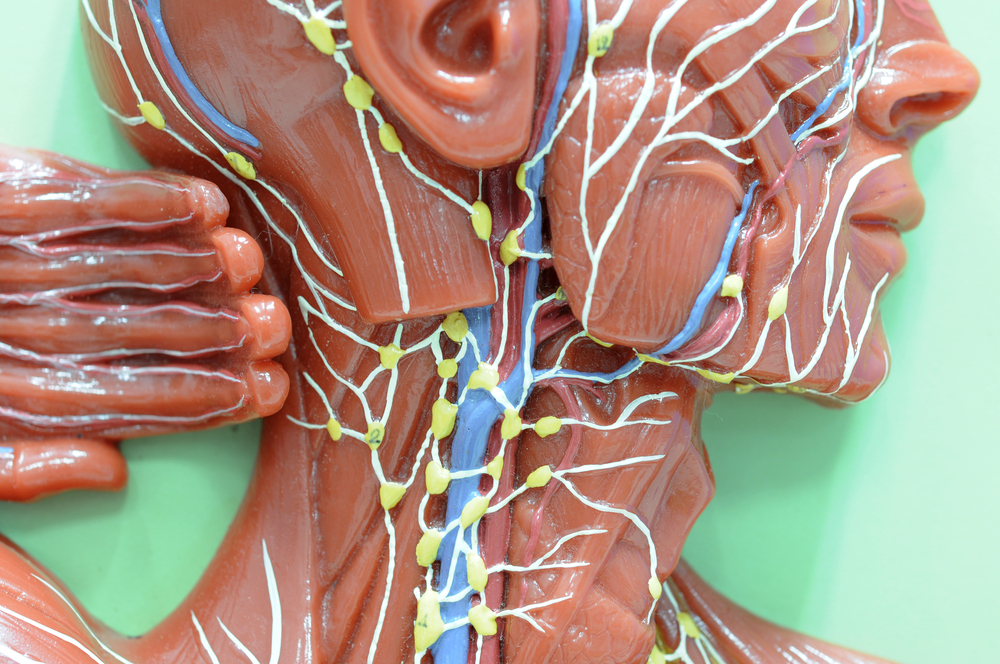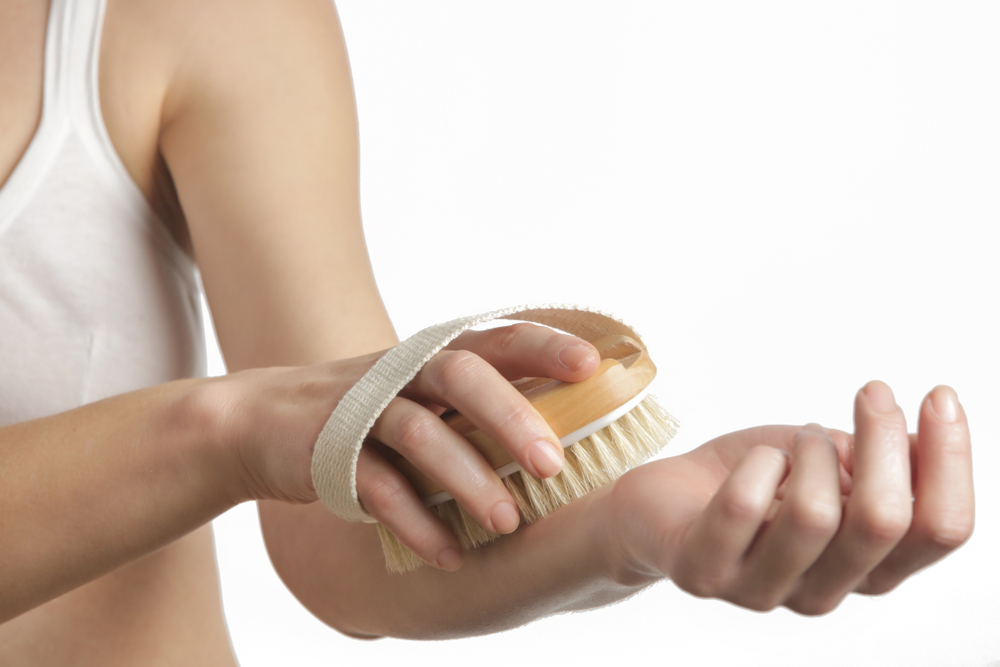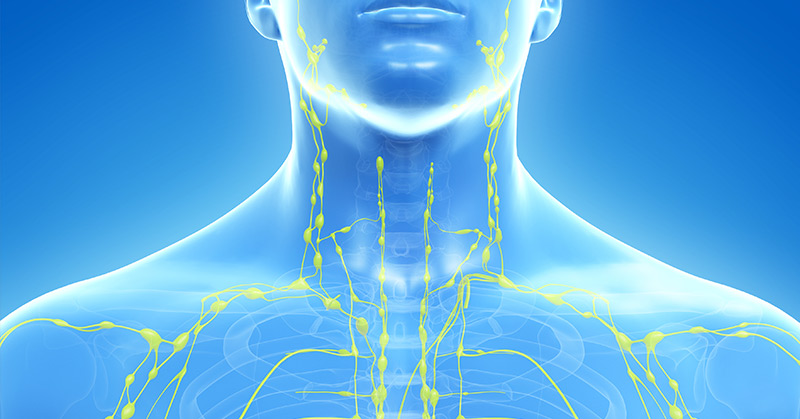Do you find yourself coming down with multiple colds every winter? Do eat healthily, get a good amount of sleep every night, and still feel run-down? It may be time to start taking better care of your lymphatic system.
What is Your Lymphatic System?

The lymphatic system is part of your immune system. It transfers fluids throughout the body through a system of lymphatic vessels, lymph nodes, and two collecting ducts [1]. The thymus, bone marrow, spleen, tonsils, and appendix are also a part of your lymphatic system [1].
The lymphatic fluid contains proteins, minerals, and nutrients. It also contains damaged cells, cancer cells, and foreign particles, like bacteria and viruses [1]. Everything that is transported through the lymph has to pass through at least one lymph node, where foreign substances are destroyed before returning to the bloodstream [1]. Unlike the venous system, which relies on the heart to pump blood in various directions throughout your body, the lymphatic system flows primarily toward the neck and does not have a pump– it relies on the body’s movement to circulate (i.e. muscle contraction) [2].
Read More: 6 Ways To Support Your Glymphatic System and Brain Health
Why Should You Support Your Lymphatic System?

Having a healthy lymphatic system is crucial to your overall health and ability to fight off diseases, especially cancer, and performs many important functions:
- Drains fluid back into the bloodstream. The lymphatic system collects excess fluid that surrounds your tissues and organs. If this did not happen, lymph fluid would build up in the body and cause swelling [3].
- Filters Lymph. When fluid passes through the lymph nodes, white blood cells attack bacteria and viruses. This is also where doctors check to see if cancer has spread throughout your body since cancer cells that break away from a tumor can attach to nearby lymph nodes [3].
- Removes impurities from the body. The lymphatic system helps remove toxins from your body and disposes of them through sweating, bowel movements, urine, and breath [3].
- Fights Infection. The lymphatic system builds white blood cells, also known as lymphocytes, that produce antibodies that defend the body against disease [3].
Maintaining a healthy lymphatic system is extremely important so that it can perform all of its functions effectively and prevent you from becoming sick. Let’s now look at how your system can be overburdened with infections.
Your Lymphatic System Can Become Overburdened Due to Infection and Disease

In the presence of disease, your lymphatic system can become overwhelmed. Symptoms of this include:
- Chronic fatigue
- Swollen lymph nodes (especially in the throat, armpits, or groin)
- Muscle and joint aches and pains
- Sore throats and frequent colds
- Frequent infections and viruses
- Fibromyalgia symptoms
- Arthritis
- Cancer formation
There are also some diseases that impact the lymphatic system:
- Glandular fever: when the lymph nodes become swollen and tender.
- Lymphoma: a type of cancer that starts in the lymph nodes
- Hodgkin’s Disease: cancer of the lymphatic system
- Edema: Fluid retention that causes swelling.
- Tonsillitis: infection in the tonsils in the throat.
- Lymphadenopathy: lymph nodes become swollen due to infection.
- Lymphadenitis: inflammation in the lymph nodes due to a bacterial infection.
- Lymphangitis: this affects the lymphatic vessels rather than the nodes.
- Splenomegaly: an enlarged spleen due to viral infection [4].
Read More: 10 Ways To Support Your Lymphatic System
Eating to Support Your Lymphatic System

As with most systems in our bodies, a proper diet is essential for maintaining a healthy lymphatic system. Dr. Jennifer Weinberg, M.D., MPH., MBE, suggests opting for an organic, anti-inflammatory diet with plenty of leafy green vegetables, omega-3 fatty acids, and herbs and spices like ginger, turmeric, and garlic. She also advises that you avoid processed additives, chemicals, and artificial ingredients since these cause more stress to the lymphatic system [8].
She also stresses the importance of drinking plenty of water to keep your lymph fluid flowing well and avoiding high-sugar soft drinks, processed juices, sports drinks, and alcohol, which can burden your metabolism. Too much caffeine will also dehydrate you, so should be consumed in moderation [8].
Finally, she encourages the inclusion of raw fruits and vegetables to break down toxic build-up and free radicals. Their high-fiber content will also promote regular elimination and cleansing of the intestinal villi, which supports the intestinal lymphatic system [8]. Red foods like berries, cherries, pomegranates, and beets also help keep the lymph flowing freely [8].
5 More Ways You Support Your Lymphatic System

There are a number of ways you can keep your lymphatic system in top shape:
- Exercise. As explained earlier, the lymphatic system does not have a pump to move fluid throughout your body. It relies on the movement of your musculoskeletal system to keep them circulating. Any type of exercise is beneficial, but yoga and HIIT workouts appear to be especially helpful [4].
- Rebounding. This is a type of low-impact cardiovascular exercise. It involves jumping up and down on a mini trampoline and allows you to work your cardiovascular system while still being gentle on the joints [5].
- Massage therapy and foam rolling. “Lymphatic drainage massage” is a special type of massage therapy that breaks up lymph congestion and helps cells release toxins [6]. Foam rolling can also help prevent fluid buildup within muscle tissue.
- Dry Brushing. This technique involves rubbing a brush with coarse, natural fiber bristles all over your body in a circular motion, starting from your feet and working toward your neck. The coarse fibers help remove dead skin and improve the skin’s ability to get rid of toxins through pores [7].
- Deep Diaphragmatic Breathing. Deep diaphragmatic breathing helps lymph move through the bloodstream and increases the elimination of toxins. All you have to do is breathe deeply through your nose, hold for four counts, and then exhale through your mouth for two counts. As you improve, you can increase the length of the breath. Exhaling twice as long as inhaling brings oxygen to the blood and activates the lymphatic system. You can do this two or three times per day [2].
Disclaimer: This information is not intended to be a substitute for professional medical advice, diagnosis or treatment and is for information only. Always seek the advice of your physician or another qualified health provider with any questions about your medical condition and/or current medication. Do not disregard professional medical advice or delay seeking advice or treatment because of something you have read here.
Read More: This is what sleeping on the left side does for our brain, stomach & glymphatic health
Sources
- https://www.merckmanuals.com/en-ca/home/heart-and-blood-vessel-disorders/lymphatic-disorders/overview-of-the-lymphatic-system
- https://www.msdmanuals.com/professional/cardiovascular-disorders/lymphatic-disorders/overview-of-the-lymphatic-system/
- https://www.unitypoint.org/desmoines/article.aspx?id=3c97b5ba-0fe3-4616-aee1-6033a81d1c57
- https://draxe.com/health/lymphatic-system/
- https://www.healthline.com/health/exercise-fitness/rebounding#What-is-rebounding?
- https://www.ncbi.nlm.nih.gov/pubmed/19243724

